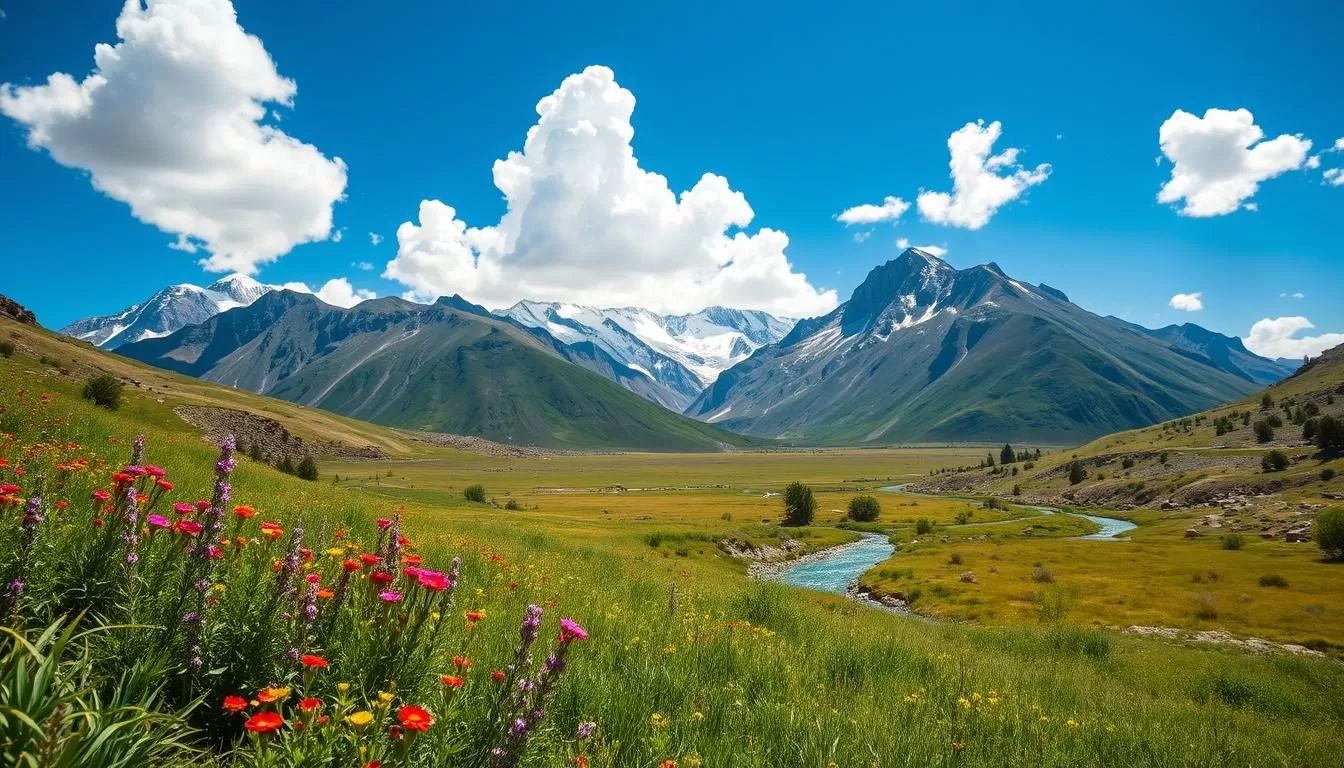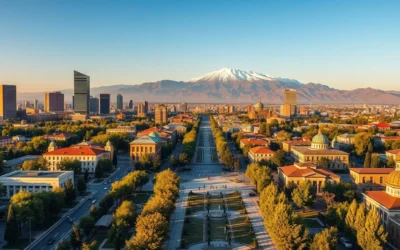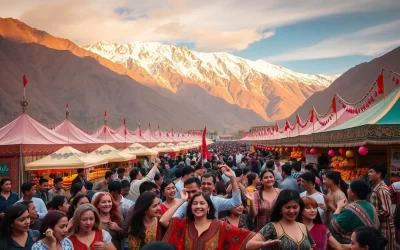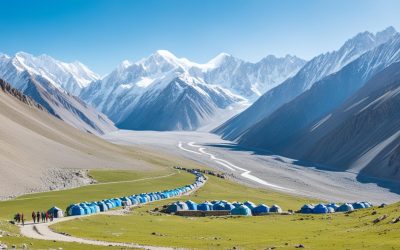Are you ready to escape to a land that feels frozen in time? Tajikistan offers a unique travel experience, with breathtaking landscapes and a rich cultural heritage. However, the country’s varying climate conditions significantly impact the best time to visit.
Understanding the seasonal patterns is crucial for planning a successful trip. The weather can make certain regions inaccessible during specific months. This guide will help you determine the ideal time to visit based on your travel preferences, whether you’re interested in mountain trekking, cultural exploration, or festival experiences.
From the lowland cities to the towering Pamir mountains, Tajikistan’s diverse regions offer distinct seasonal characteristics. By navigating the climate variations, you can create your perfect weather-savvy adventure.
Understanding Tajikistan’s Climate and Geography
Understanding Tajikistan’s climate requires a look at its varied geography. The country’s diverse landscapes create a range of climates, from the hot summers and mild winters in lowland cities like Dushanbe and Khujand, to the short, cool summers and long, harsh winters in the high mountain regions.
Diverse Landscapes and Microclimates
Tajikistan’s geography is characterized by dramatic contrasts, with 93% of the country covered by mountains. The Pamir and Fann ranges create distinct microclimates throughout the region. The elevation ranges from around 300 meters in the valleys to over 7,000 meters at its highest peaks.
Altitude’s Impact on Weather Conditions
The varied elevation results in significant temperature variations between lowland cities and mountain regions. In the same day, the temperature can differ by as much as 30°C. Understanding these regional weather differences is crucial for planning your trip during the best season.
Tajikistan: Best Months for a Weather-Savvy Trip
Tajikistan’s diverse climate means that the best time to visit varies greatly depending on your plans. The country’s geography, with its vast mountain ranges and valleys, creates a variety of microclimates that can significantly impact your travel experience.
June to September: The Prime Travel Window
The best time to visit Tajikistan is between June and September, when the weather is ideal for hiking and exploring the Pamir ranges. During this period, mountain passes are accessible, temperatures are comfortable for outdoor activities, and precipitation is minimal. You’ll have the best access to Tajikistan’s most spectacular attractions, including the Pamir Highway, remote mountain lakes, and high-altitude trekking routes.
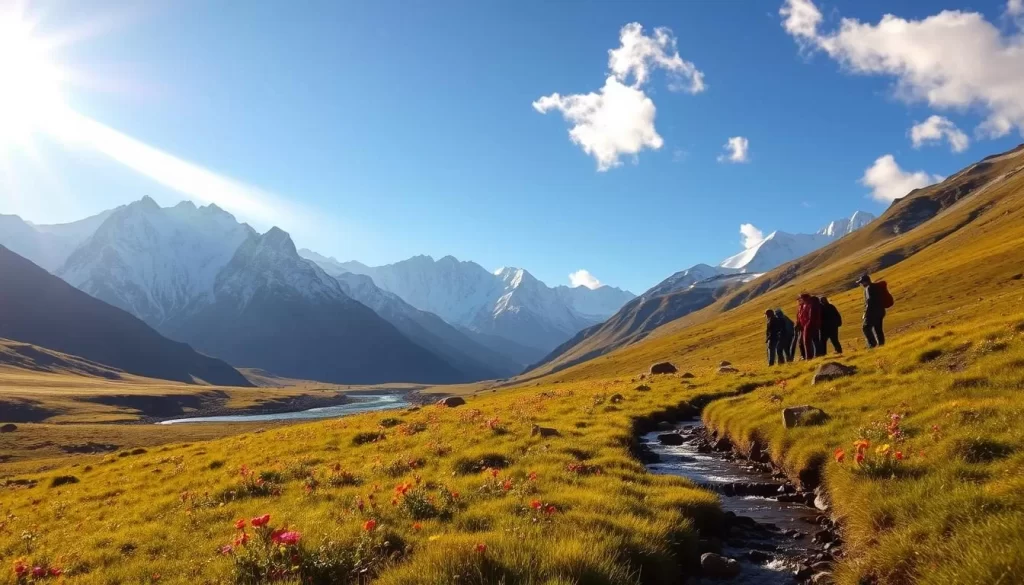
Shoulder Seasons: Pros and Cons
The shoulder seasons, late May and early October, offer a mix of advantages and disadvantages. While you can expect fewer tourists and more moderate temperatures in the cities, there’s an increased risk of unpredictable weather in the mountain regions.
| Season | Pros | Cons |
|---|---|---|
| June to September | Accessible mountain passes, comfortable temperatures | Hot cities, peak tourist season |
| Late May and early October | Fewer tourists, moderate city temperatures | Unpredictable mountain weather |
Summer in Tajikistan: June to September
Tajikistan in the summer offers a unique blend of culture, adventure, and breathtaking landscapes. The warm weather and long days make it an ideal time for outdoor activities and cultural experiences.
Temperature and Rainfall Patterns
During the summer months, daytime temperatures in the mountain regions are comfortably mild, ranging from 15-25°C (59-77°F), while cities like Dushanbe can get quite hot, reaching highs of 35-40°C (95-104°F). Rainfall is minimal, making it perfect for trekking and exploring.
Mountain Access and Trekking Opportunities
Summer provides the most reliable access to high mountain passes, remote villages, and alpine lakes. The Pamir Highway is a highlight, offering incredible trekking and cycling opportunities. You can enjoy hiking, cycling, and horse riding in the beautiful landscapes.
Summer Festivals and Cultural Events
Summer in Tajikistan is also a time for festivals and cultural events, particularly in the Pamir region. You can experience traditional music, dance, and horseback games that showcase the country’s rich heritage. The Pamir Highway is not just a route; it’s an adventure through diverse cultures and landscapes.
- Enjoy comfortable temperatures in the mountains and vibrant cultural events.
- Explore the Pamir Highway and experience the best of Tajikistan’s landscapes.
- Participate in traditional festivals and sporting events.
Spring in Tajikistan: March to May
Tajikistan’s spring, spanning March to May, is a period of dramatic change, offering a unique blend of cultural festivities and outdoor adventures. As temperatures rise, the landscape transforms, and the country comes alive with vibrant colors.
Weather Transitions and Considerations
During spring, daytime temperatures in cities like Dushanbe and Khujand become pleasant, ranging between 15-30°C (59-86°F). However, it’s essential to note that high mountain passes remain snow-covered until late May, and spring rains can cause landslides, potentially blocking roads.
Spring Activities and Celebrations
Spring is a good time to explore Tajikistan’s cities and cultural sites before the summer heat sets in. The season is marked by significant cultural events, including the celebration of Navruz (Persian New Year) in March, which features traditional music, dance, and local cuisine.
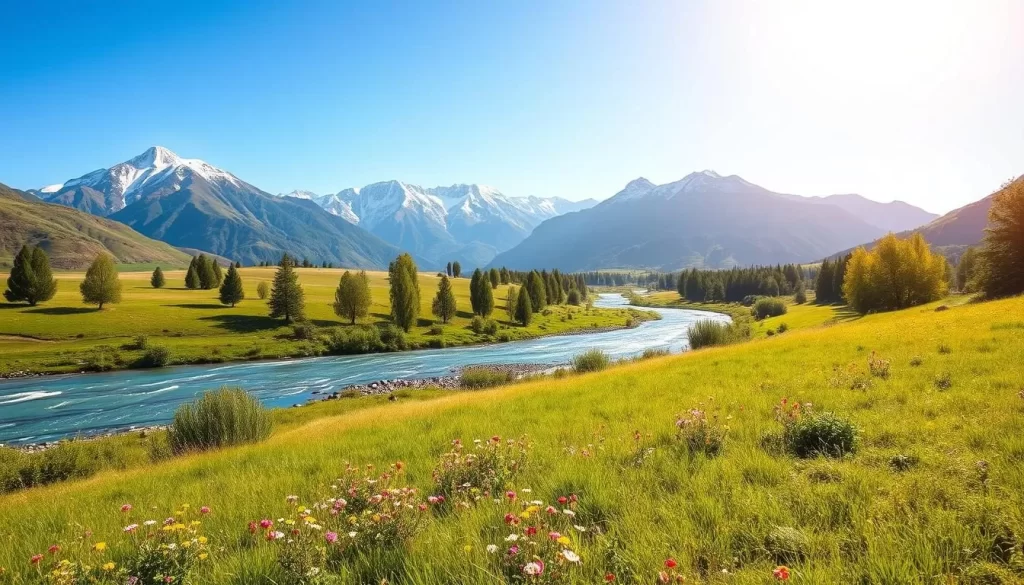
Winter in Tajikistan: October to February
Winter descends upon Tajikistan from October to February, bringing with it a mix of harsh mountain conditions and milder city climates. During these months, the high mountain passes are covered in snow, making most of the Pamir Highway inaccessible to all but the most experienced adventurers.
Cold Season Challenges and Limitations
The winter season poses significant challenges, particularly in the high mountain regions where temperatures can plummet to -30°C (-22°F) or lower. While cities like Dushanbe experience milder winters, averaging between -1°C and 10°C (30-50°F), the low season period means fewer tourists and potentially lower prices. However, many guesthouses in remote areas close, and transportation options become limited, requiring careful planning.
Winter Activities for the Adventurous Traveler
Despite the challenges, winter offers unique opportunities for adventure and photography. You can enjoy skiing near Dushanbe, explore cultural attractions in the cities, and experience traditional Tajik winter hospitality. For photography enthusiasts, the snow-capped mountains against clear blue skies make for incredible backdrops as you explore the lower-altitude areas.
Regional Weather Guide: Where to Go When
Tajikistan’s varied landscapes mean that the optimal time for a visit depends heavily on the specific region you’re planning to explore. Different areas have distinct weather patterns, making some more accessible during certain times of the year.
Dushanbe and Lowland Cities
The cities of Dushanbe and other lowland areas are best visited during the spring (April to May) and autumn (September to October), when temperatures are pleasant, ranging from 15-25°C (59-77°F). These periods are ideal for exploring urban attractions, museums, and markets without the sweltering summer heat that can reach 40°C (104°F) in July and August.
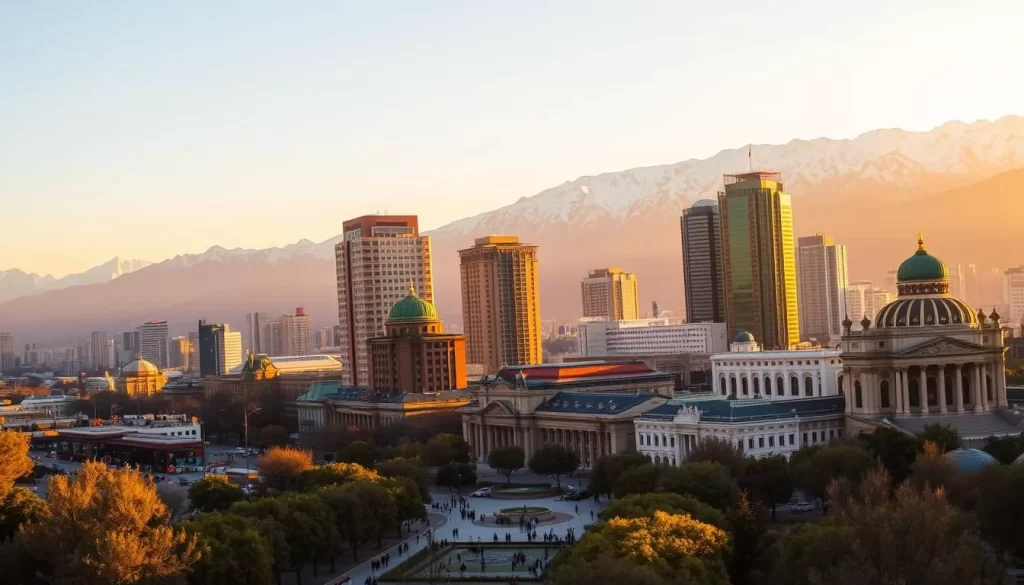
The Pamirs and Mountain Regions
The Pamir region, including the famous Pamir Highway, is most accessible from June through September. During this time, mountain passes are clear of snow, and daytime temperatures typically range from 15-25°C (59-77°F), although nights can remain cold. This period is perfect for trekking, hiking, and exploring the high-altitude landscapes.
Khujand and Northern Tajikistan
Khujand and northern Tajikistan offer a slightly longer visitation window compared to the Pamirs, with good conditions from May through October. This makes the region suitable for early or late-season trips, providing a broader timeframe for travelers to plan their itinerary.
For a comprehensive trip covering multiple regions, September is considered the best month overall, offering comfortable temperatures in the cities and still-accessible mountain passes. However, this requires advance booking of accommodations due to its popularity.
Navigating the Pamir Highway: Seasonal Accessibility
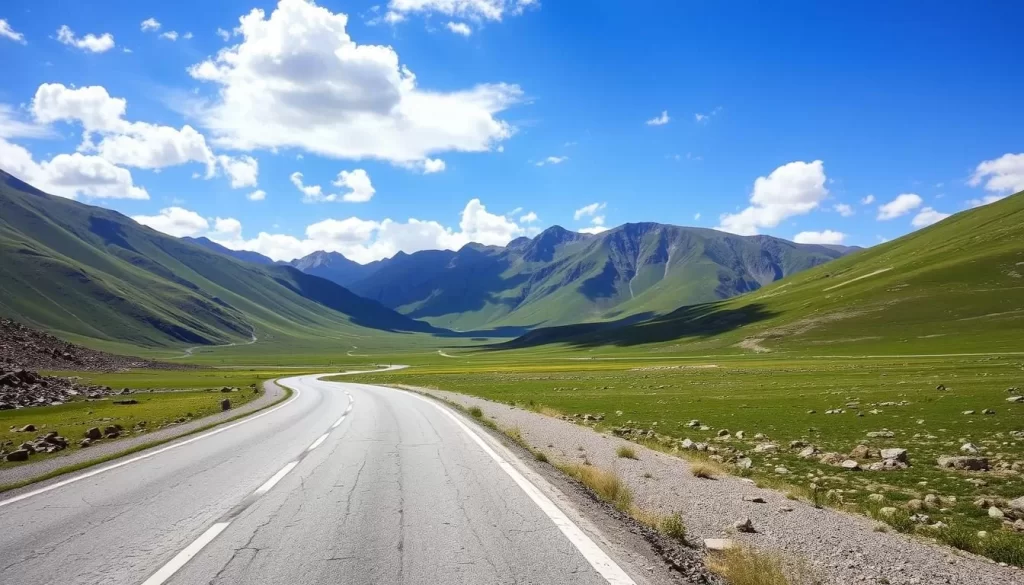
As you prepare to journey along the Pamir Highway, it’s essential to consider the impact of seasonal weather on the route’s accessibility. The legendary Pamir Highway (M41), one of the world’s highest international highways, requires careful seasonal planning as its accessibility is heavily dependent on weather conditions throughout the year.
Summer Access: Peak Conditions
Summer (June-September) offers the most reliable and safest access to the entire Pamir Highway route, with all high mountain passes open, minimal risk of landslides, and comfortable daytime temperatures for driving, cycling, or motorcycle journeys. The highest passes, including Ak-Baital Pass (4,655m/15,270ft), are typically accessible from mid-June to early September.
Shoulder Season Considerations
The shoulder seasons (late May and early October) present a gamble for Pamir Highway travelers—passes may be open but can close suddenly with early or late snowfall, requiring flexible itineraries and backup plans. Travelers should be prepared for unpredictable weather conditions during these periods.
Cultural Festivals and Events Calendar
Tajikistan’s cultural calendar is rich with festivals and events that reflect the country’s diverse heritage and traditions. From spring to fall, various celebrations take place, offering insights into the nation’s history and cultural practices.
Spring Celebrations: Navruz and More
Spring is a significant time in Tajikistan, marked by the celebration of Navruz, the Persian New Year, which takes place from March 21 to 23. This period is characterized by elaborate feasts, traditional music, and dance performances, showcasing ancient customs still practiced today. Other spring events include various cultural festivals that highlight the country’s rich cultural tapestry.
Summer and Fall Festivities
Summer brings numerous regional festivals, particularly in the Pamir region. The Roof of the World Festival (Bam-i Dunya) in Khorog, held in late July, is a notable event that celebrates Pamiri music, dance, handicrafts, and traditional sports like buzkashi (goat pulling). In the fall, events like the Falak Music Festival in Dushanbe (October) and the Didor International Film Festival take place, celebrating Tajik musical forms and screening Persian, Russian, and European films, respectively.
Timing your visit to coincide with these festivals can provide not only entertainment but also deeper insights into Tajikistan’s diverse cultural identity. It’s advisable to book accommodations in advance during major celebrations.
Packing Essentials for Tajikistan’s Varied Climate
When preparing for your trip to Tajikistan, it’s crucial to pack wisely due to the country’s diverse climate conditions. The significant temperature variations between day and night, especially in mountain regions, demand a thoughtful approach to packing.
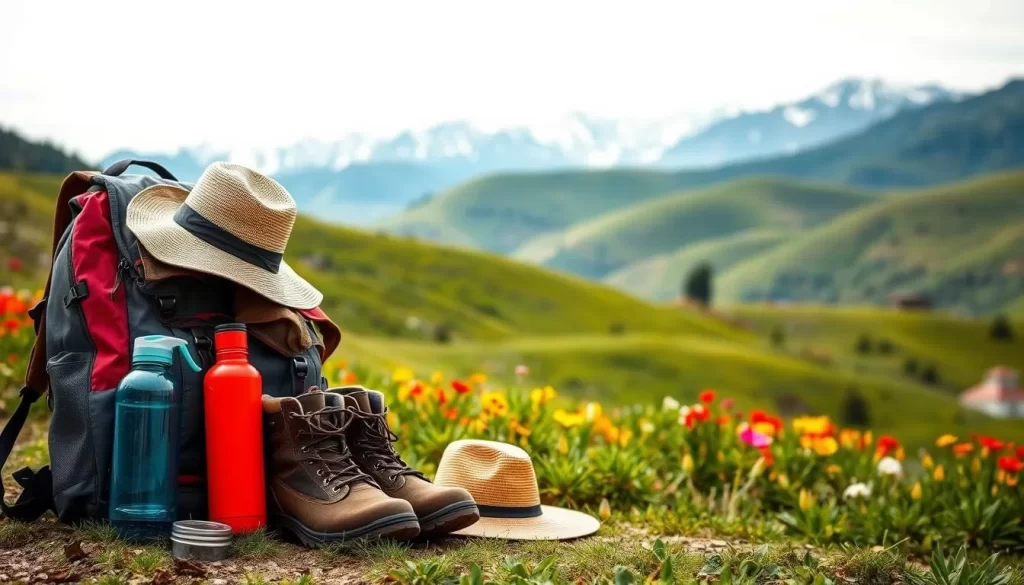
Summer Packing List
For a summer trip, pack lightweight, breathable clothing for hot city days, along with warm layers for cold mountain nights. Include a waterproof shell and warm hat for unexpected weather changes.
Spring/Fall Packing Recommendations
During spring and fall, versatile wardrobes with layerable items are essential. Bring waterproof hiking boots, rain gear, and mid-weight insulation layers to adapt to rapidly changing conditions.
Winter Travel Gear
For winter travel, serious cold-weather gear is necessary, including a heavy down jacket, insulated waterproof boots, and multiple insulating mid-layers, especially if venturing beyond major cities.
Regardless of the season, don’t forget to pack a high-quality water filter or purification system, strong sun protection, basic medical supplies, and a headlamp or flashlight for power outages in remote areas.
Weather-Related Travel Considerations
When planning your trip to Tajikistan, it’s crucial to consider the weather-related factors that can impact your travel plans. The country’s diverse climate and geography make it essential to be prepared for various weather conditions.
Road Conditions and Transportation
Tajikistan’s road conditions vary dramatically with the seasons. During spring, the risk of landslides and washouts increases due to melting snow and rain. In contrast, winter sees many mountain passes closed due to heavy snowfall. Always build extra time into your itinerary to account for potential weather-related delays.
Altitude Sickness Prevention
Altitude sickness is a serious concern in Tajikistan, where elevations often exceed 3,000 meters. To prevent illness, ascend gradually, with acclimatization stops, and drink plenty of water (3-4 liters daily). Be aware of the risks, especially when traveling along the Pamir Highway, and take necessary precautions.
Conclusion: Planning Your Weather-Perfect Tajikistan Adventure
The best time to visit Tajikistan is a question that depends on whether you’re trekking the Pamir Highway or exploring cultural centers. For adventure seekers, June through September offers the most comprehensive access to all regions.
For those interested in cultural experiences and city exploration, the shoulder seasons of April-May and September-October provide more comfortable temperatures in urban areas. Creating a weather-perfect itinerary often means combining regions strategically based on seasonal conditions.
Regardless of when you choose to visit Tajikistan, building flexibility into your plans is essential. With proper planning, Tajikistan rewards visitors with extraordinary landscapes and authentic cultural experiences. Timing your visit perfectly makes the effort well worth the remarkable experiences that await.
The above is subject to change.
Check back often to TRAVEL.COM for the latest travel tips and deals.
Here are some Tours & Sightseeing suggestions that might pique your interests!
